Diablo Watch
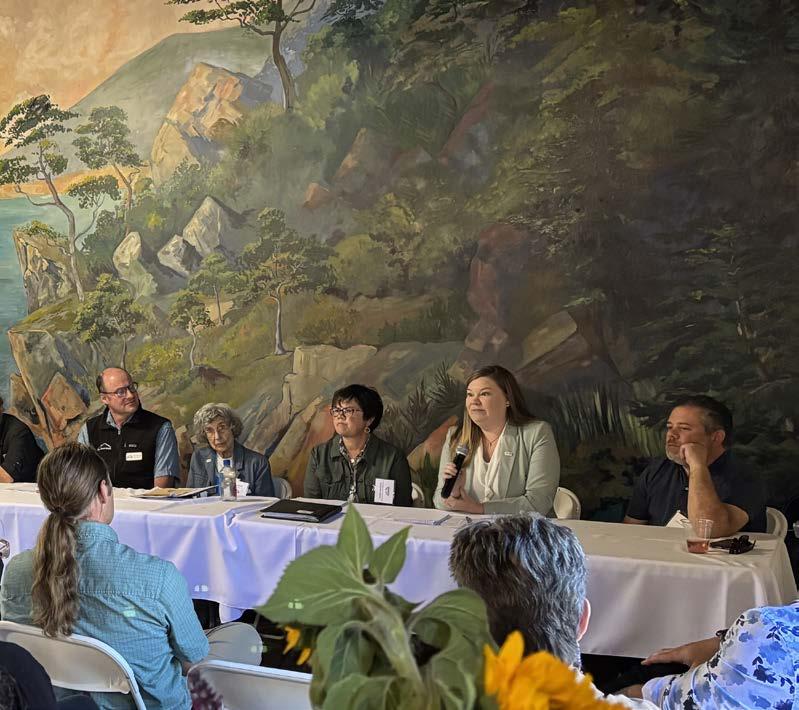
The Wild Heart of California
Inspiring a movement to protect the Diablo Range
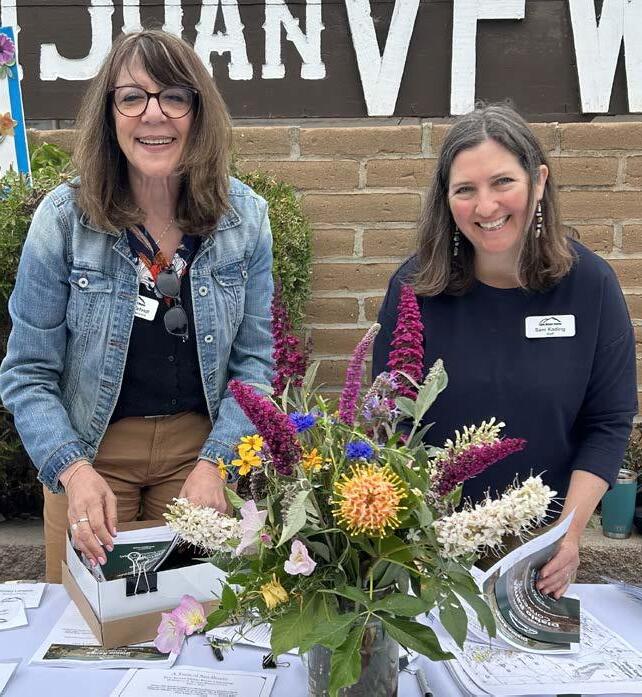
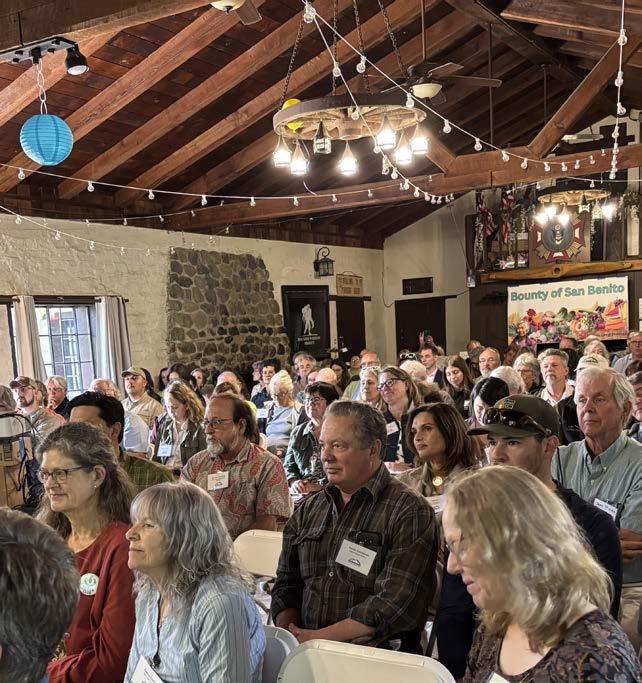
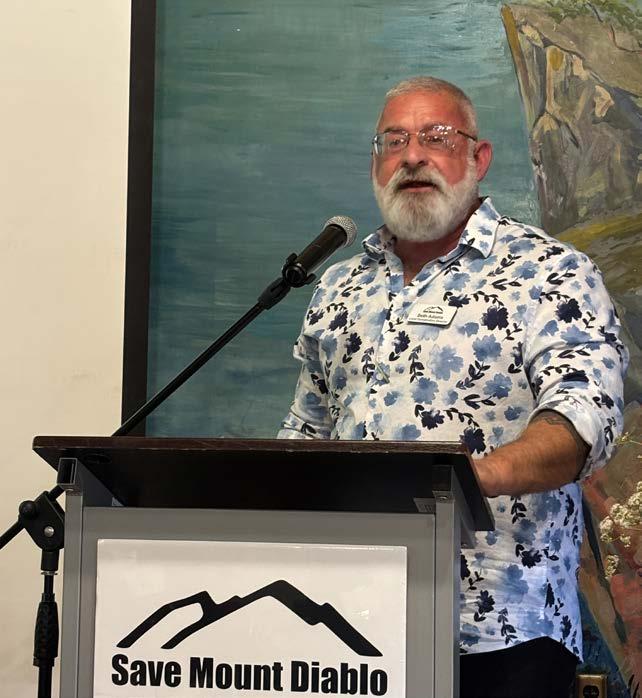
The first annual Diablo Range Convening: June 5, 2025


Inspiring a movement to protect the Diablo Range



The first annual Diablo Range Convening: June 5, 2025

BOARD OF DIRECTORS
Jim Felton, President
Maga Kisriev, Treasurer
Giselle Jurkanin, VP & Secretary
Keith Alley
Steve Balling
John Gallagher
Liz Harvey Roberts
Claudia Hein
Scott Hein
Jerome Holland
Shirley Langlois
ADVISORY COUNCIL
Stewart Beatty
Joseph Belli
Tom Dowd
Robert E. Doyle
Peter Frazier
STAFF

Bob Marx
Doug Matthew Amara Morrison
Phil O’Loane
Robert Phelps
Malcolm Sproul
Achilleus Tiu
John Kiefer
Beverly Lane
Doug McConnell
Jeff Stone
Jeanne Thomas
Ted Clement, Executive Director
Seth Adams, Land Conservation Director
Sean Burke, Land Programs Director
Monica Oei, Finance & Administration Director
Steven dePaschalis, Land Use Advocate
Juan Pablo Galván Martínez, Senior Land Use Manager
Shannon Grover, Sr. Development Associate & Event Manager
Dana Halpin, Administrative Assistant
Brit Hutchinson, Event & Communications Coordinator
Samantha Kading, Assistant Development Director
Morvarid Keymanesh, Staff Accountant
Laura Kindsvater, Senior Communications Manager
Queenie Li, Database Coordinator
Katie Lopez, Staff Accountant & Office Administrator
Roxana Lucero Keshmiry, Land Stewardship Manager
Linda Muders, Accounting & Administrative Associate
Mary Nagle, Communications Associate
Kendra Smith, Education & Outreach Coordinator
Haley Sutton , Land Stewardship Associate
Cecilia Zefeldt, Executive Assistant
Edward Sortwell Clement, Jr. Executive Director, Save Mount Diablo
We are grateful for your generous support because it is helping us increase awareness of the importance of protecting Mount Diablo and its Diablo Range as well as growing the partnerships required to do that. Consider the following two examples from this year.
In June, we spearheaded, with help from our good partners, a successful firstever Diablo Range Convening, with more than 150 people registered, representing over 60 conservation organizations; tribes; and federal, state, and local agencies, to build awareness and collaborations for Mount Diablo and the mountain range that sustains it. It was held in San Benito County, which has the largest stretch of the range. This strategic gathering was a success, and we look forward to putting on next year’s convening in the Mount Diablo area.
This year, we have been working with the legislature to advance Mount Diablo and its Diablo Range as an official California conservation priority. Save Mount Diablo sponsored a Diablo Range bill that would establish the range as a California conservation priority and create a Diablo Range program within California’s Wildlife Conservation Board.
Our bill was robustly approved by the Assembly Committee on Water, Parks, and Wildlife and the Assembly Committee on Natural Resources. Then, in May, a decision was made to suspend all bills that would establish costly new programs, like our Diablo Range bill, because of California’s large projected budget deficit.
We quickly pivoted to sponsor an Assembly Concurrent Resolution officially recognizing the Diablo Range as a California conservation priority but not establishing a program to financially support more conservation in the range.
Our Assembly Concurrent Resolution was unanimously approved by the California Assembly Committee on Water, Parks, and Wildlife on September 10th and then it was unanimously approved by the Assembly itself on September 13th. In January, our Diablo Range Resolution will go to the California Senate, and if approved, Mount Diablo and its Diablo Range will be on the map as an official California conservation priority.
We are grateful for you because your generosity and vision are helping us successfully expand our conservation work so we can do our part to better meet and address the challenges we face, like the climate and biodiversity crises.
With Gratitude,


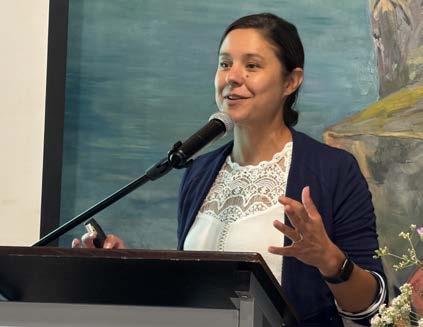

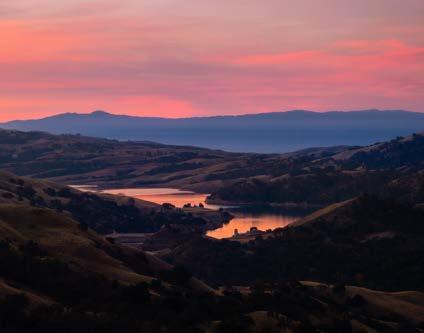
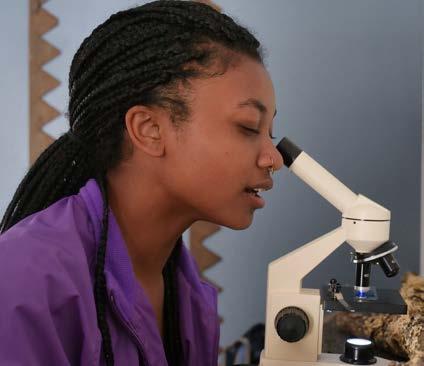
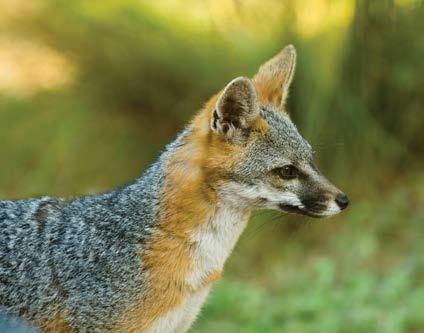
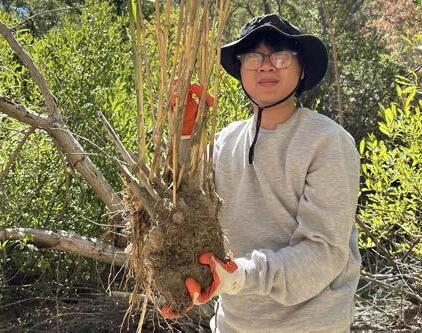

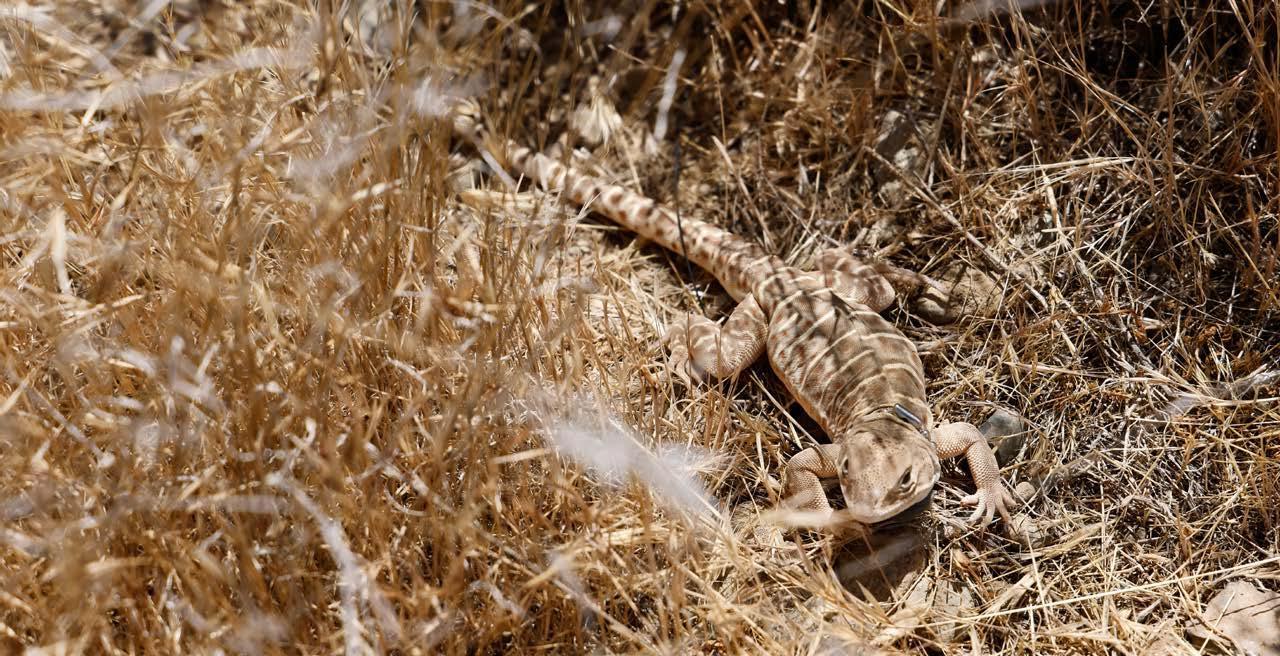
The first Diablo Range Convening, on June 5, 2025, builds a community to advocate for a mountain range and its incredible biodiversity
By Bruce Hamilton
Recently, a growing community of individuals, agencies, and organizations have turned their attention to the plight and promise of the Diablo Range. As development pressure grows, a widening coalition of advocates are rallying to make this hidden gem California’s next big conservation success story.
The gathering brought together local tribal representatives, landowners, land trusts, local politicians, and others with an interest in the Diablo Range.
Most did not know each other, but were here to learn, build community, and start to develop a common vision and path forward.
I’ve spent more than 50 years of my life working for the Sierra Club on campaigns to protect large landscapes from Alaska to the California
desert. The grand scale and compelling ecological necessity of this campaign present an exciting opportunity for us all.
I’m all in. And I have excellent company.
The biggest landscapelevel opportunity to protect biodiversity in California
“For most people, the Diablo Range is something to look at briefly on the way to someplace else, an entire mountain range hidden in plain sight,” said wildlife biologist Joseph Belli.
Yet this underappreciated mountain chain is on the verge of becoming California’s next big conservation story. The range is 4 million acres in size—more than five times the area of Yosemite National Park.
It stretches across 200 miles of inner coastal hills and mountains, from the Sacramento River’s Carquinez Strait in the north to the Antelope Valley in Kern County.
A substantial percentage of the better-known and celebrated Sierra Nevada, Cascades, California desert, and California coast undeveloped

Endangered California condors soar at Pinnacles National Park, part of the Diablo Range.

lands have received forms of protection. In contrast, only 27 percent of the Diablo Range has some level of conservation protection, and a lot of it is concentrated in the northern section.
“The most amazing thing about the Diablo Range is its size, astounding biodiversity, and how intact it is.
“The other most amazing thing is that a conservation project of this scale and importance is still possible in California,” observed Seth Adams, the Land Conservation Director of Save Mount Diablo.
Ecologists and conservation biologists see the Diablo Range as a sanctuary for imperiled species and therefore the biggest landscape-level opportunity to protect biodiversity in California.
Even though it is surrounded by more than 10 million people in the
cities along the coast and Central Valley, only a couple thousand people inhabit the interior of the range.
That wildness has enabled California condors, San Joaquin kit foxes, tule elk, yellow-legged frogs, and bluntnosed leopard lizards to continue to survive despite being driven to near extinction by colonization and land development.
Valentin Lopez, the Chair of the Amah Mutsun Tribal Band, declared that he and his ancestors had been waiting 250 years for an event like this where “we can talk about protecting the sacred and cultural sites of our ancestors.”
Though his tribe and dozens of other Indigenous tribes have lived in and around the Diablo Range for thousands of years, they were brutally rounded up, murdered, and displaced by
BELOW LEFT: An endangered bluntnosed leopard lizard is released on the Panoche Plateau, also part of the Diablo Range. BELOW RIGHT: One hundred fifty representatives of more than 60 organizations come together to advance conservation of the Diablo Range at our first annual convening.
colonial forces and only now are being recognized as the rightful original stewards and occupants of these lands.
One crucial and important feature of the emerging land conservation initiatives is that the federal, state, and local efforts all now recognize the essential need to involve and fully consult the tribes (both recognized and unrecognized) in every step of the process and to draw on traditional ecological knowledge as well as modern science when considering land management and protection strategies.
Throughout the day, stories were shared about efforts to protect and restore these ecosystems.
• A young man from Patterson working with others to defeat a proposed reservoir in scenic Del Puerto Canyon.
• The new mayor of Hollister, who was elected on a platform to slow the growth that was covering orchards with subdivisions and clogging roads.
• A collection of students, scientists, landowners, and tribal representatives seeking to restore the Pajaro River corridor.
• Fresno Chaffee Zoo staff, who have been releasing endangered bluntnosed leopard lizards back into the Diablo Range on an annual basis.
• California condor recovery researchers and volunteers, whose efforts have led to the dramatic recovery of the population. Condors now fly from Pinnacles National Park and the Big Sur Coast north past Mount Diablo.
• Representatives of the Santa Clara Valley Open Space Authority and the Land Trust of Santa Cruz County working to establish wildlife crossings and corridors between the Diablo Range and the Santa Cruz mountains.
• A Sierra Club leader who has worked with the Bureau of Land Management and others for over 50 years to protect the ecologically fragile federal public lands in the Diablo Range.
• A citizens group —Protect San Benito—that has banded together with allies to enact a countywide ban on oil and gas fracking, defeat proposals to be the dumping ground for Silicon Valley’s garbage, and enact a new measure for sustainable, controlled development.
• Efforts by Save Mount Diablo to protect a narrow wildlife corridor across Altamont Pass so that Mount Diablo wild lands are not cut off from the rest of the Diablo Range.
Diablo Range public lands at risk!
This convergence of Diablo Range
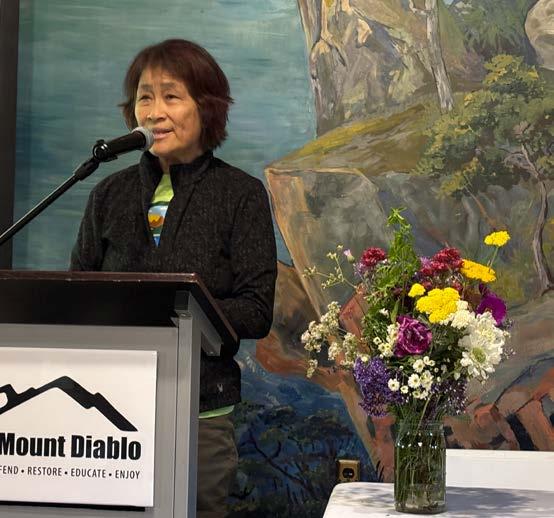
advocates became all the more urgent in the days following, as the US Senate considered Trump’s budget reconciliation bill.
This bill had a proposal to sell millions of acres of federal public lands to offset the Trump administration’s tax breaks for the wealthy and big businesses.
The sales, which would have included offering up 86 percent of the Bureau of Land Management public lands in the Diablo Range, could have transferred to developers more than 200,000 acres.
The lands at risk included the highest peak in the range—San Benito Mountain—and other wild public lands that are vital for endangered species.
This devastating plan to sell off public lands was removed thanks to public pressure. However, US Senator Mike Lee, the proponent of the plan, says he will keep pursuing the sale of public lands.
The relative obscurity of the Diablo Range public lands cannot protect them—we will need a big public outcry to defend them against those who are willing to sell off our common heritage for tax breaks for the rich.
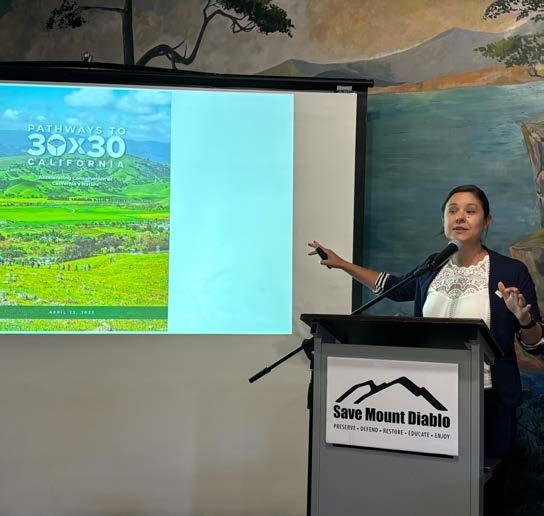
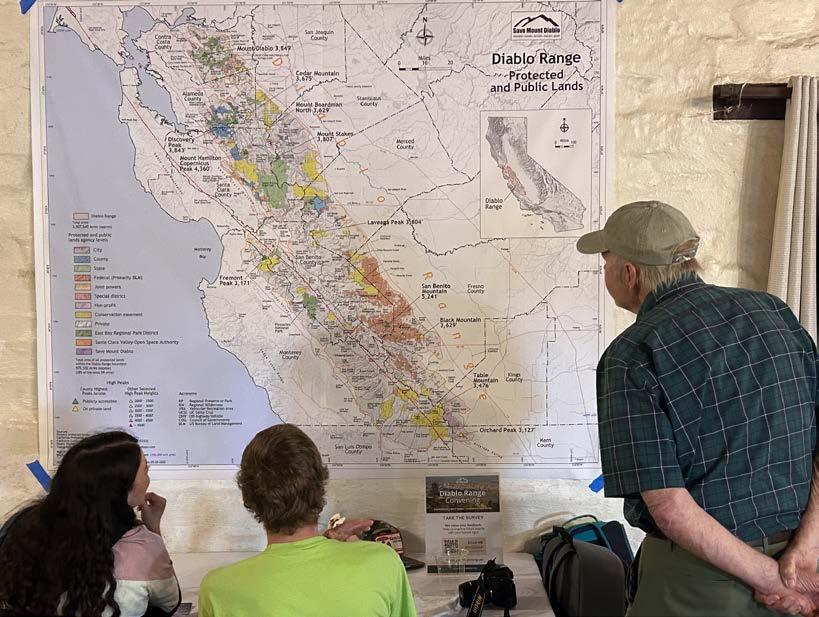
There were many reasons for hope and optimism at the convening.
At the urging of scientists and conservationists, the state of California has adopted legislation to commit to protecting 30 percent of its lands and coastal waters by 2030 (30x30).
It’s also drafted up a road map for how to do so, which includes an emphasis on the Diablo Range.
Even if the Trump administration pulls back from federal commitments made during the Biden administration to also implement 30x30, the state has no plans of abandoning this vital effort.
To demonstrate that commitment, Meghan Hertel, Deputy Secretary of the California Natural Resources Agency for Biodiversity and Habitat, explained the need to continue the progress made to date while emphasizing diversity, equity, and inclusion; public access; and bringing tribes in at every step of the process.
She pointed out that there will need to be 4.8 million additional acres protected to meet the 30x30 goal. At least 1 million acres of that goal could come from additional Diablo Range protection campaigns.
The passage of the $10 billion Proposition 4 California Climate Bond
measure in 2024 was also a cause for celebration. A significant portion ($80 million) of it is dedicated to the San Andreas Corridor/Inner Coast Range program (which largely includes the Diablo Range).
But participants were quick to point out that this money is insufficient and needs to be used as leverage to attract other long-term reliable “durable funding” from a variety of sources to match and extend the state-level support.
Andrea Mackenzie of the Santa Clara Valley Open Space Authority urged the audience to think beyond the 30x30 goals and diversify the funding far beyond Prop. 4.
She pointed out from her long experience that to succeed we will need to adopt a multi-benefit campaign and message, “simultaneously looking at biodiversity, connectivity, water resources, climate, adaptation, resilience, agriculture, and equity and access.”
At the same time, it will be essential to build partnerships and community that are ongoing and durable.
This convening was just a first step. We are the nucleus of a growing, loving, and mutually supportive movement.
As the Protect San Benito host committee handed out locally grown
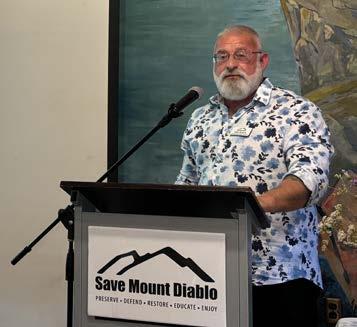
Watch Seth Adams and Joseph Belli’s presentations at our first annual Diablo Range Convening!
Visit bit.ly/sethsmd (below left) and bit.ly/drhidden (below right) to watch videos of their speeches.
chard, kale, walnuts, cherries, strawberries, and summer squash, you could feel that love and community growing. And with that parting, we left with produce and hope. •
Bruce Hamilton As a wildlife biologist and environmental activist, Bruce has been making “good trouble” for more than 50 years. Joining the Sierra Club in 1977, he’s served in several positions including Deputy Executive Director and led the development of their policies and programs, working tirelessly to protect and promote the natural world, wildlife, wild places, Indigenous rights, and climate justice. Today, he works with Third Act’s organizing team to help volunteers build the necessary skills to make more “good trouble,” and with Save Mount Diablo on their groundbreaking Diablo Range campaign.
By Ted Clement

Thankfully, with your support, Save Mount Diablo has been making great progress this year advancing the Diablo Range as a conservation priority for California.
FOR EXAMPLE, ON JUNE 5TH, Save Mount Diablo spearheaded, with help from our good partners, a successful first-ever Diablo Range Convening. More than 150 people registered, representing over 60 conservation organizations; tribes; and federal, state, and local agencies. At the convening, we built awareness and collaborations for the Diablo Range.
Save Mount Diablo also made our first-ever efforts to advance the Diablo Range legislatively as detailed below. Earlier this year, Save Mount Diablo sponsored a Diablo Range bill, Assembly Bill (AB) 1426, co-authored by Assemblymembers Ash Kalra and Rebecca Bauer-Kahan. AB 1426 would establish the Diablo Range as
an official California conservation priority and create a Diablo Range program within California’s Wildlife Conservation Board to financially support more conservation in the mountain range.
On April 8th, we provided testimony in support of our AB 1426 to the Assembly Committee on Water, Parks, and Wildlife. That committee and its Chair, Assemblymember Diane Papan, went on to approve our bill with 10 votes in favor, two against, and one abstention. We were thrilled with this robust support for our nascent effort to have the Diablo Range officially recognized as a California conservation priority.
And so, on April 28th, we provided
testimony in support of AB 1426 to the Assembly Committee on Natural Resources. The committee and its Chair, Assemblymember Isaac G. Bryan, then approved AB 1426 with 12 votes in favor, one against, and one abstention. We were ecstatic about this overwhelming support for our bill.
But on May 23rd, a decision was made to suspend all new bills that would establish costly new programs, like AB 1426 and its Diablo Range program, because of California’s large projected budget deficit.
We were disappointed, but we did not let that setback stop our efforts to have the Diablo Range officially recognized as a California conservation priority.
Thus, we quickly pivoted to sponsor an Assembly Concurrent Resolution (ACR), authored by Assemblymember Rebecca Bauer-Kahan, officially recognizing the Diablo Range as a

Assemblymember Rebecca BauerKahan authored Assembly Concurrent Resolution 107 to officially recognize the Diablo Range as a California conservation priority. ACR 107 passed the Assembly on September 13.
California conservation priority while not establishing a program to financially support more conservation in the range.
Our Assembly Concurrent Resolution, ACR 107, was reviewed and unanimously approved by the Assembly Committee on Water, Parks, and Wildlife on September 10th with 13 votes in favor and 0 votes against.
ACR 107 then went before the California Assembly, where it was reviewed and unanimously approved on September 13th with 74 votes in favor, 0 votes against, and six not voting.
This coming January, our Diablo Range Resolution will go before the California Senate, and if approved, ACR 107 will then be finalized, making the Diablo Range an official California conservation priority.
In these new legislative efforts for the Diablo Range, we are supported by Douglas D. Houston. He is the President and Legislative Advocate for Houston Magnani and Associates, a government relations and counseling firm headquartered in Sacramento. Mr. Houston has expertise in conservation and parks matters, and he is a volunteer Board member for his local land trust.
The Diablo Range provides California with one of its best opportunities to meet multiple goals in its 30x30 initiative, which was set up to help the state address the climate crisis. California’s 30x30 initiative aims to conserve 30 percent of the state’s lands and coastal waters by 2030, promoting biodiversity, climate resilience, and access to nature.
Less than 30 percent conserved The Diablo Range is 200 miles long, contains about 4 million acres that
are largely intact and undeveloped , and is less than 30 percent conserved; this mountain range runs through 12 counties, with Mount Diablo in its northernmost Contra Costa County.
The Diablo Range is an immense and important wildlife habitat corridor, teeming with biodiversity. It is home to hundreds of rare and endangered species, such as the California condor.
More than 10 million people reside in communities immediately surrounding the Diablo Range, so protecting more lands and creating more parks within the range has been identified as a great way to help more people get access to nature.
Thus, we are very pleased that we have been making great progress this year advancing the Diablo Range as a conservation priority for California. Our Diablo Range legislative efforts have greatly increased awareness, support, and momentum for the Diablo Range and Save Mount Diablo in California’s capital and beyond. •

By Steven dePaschalis
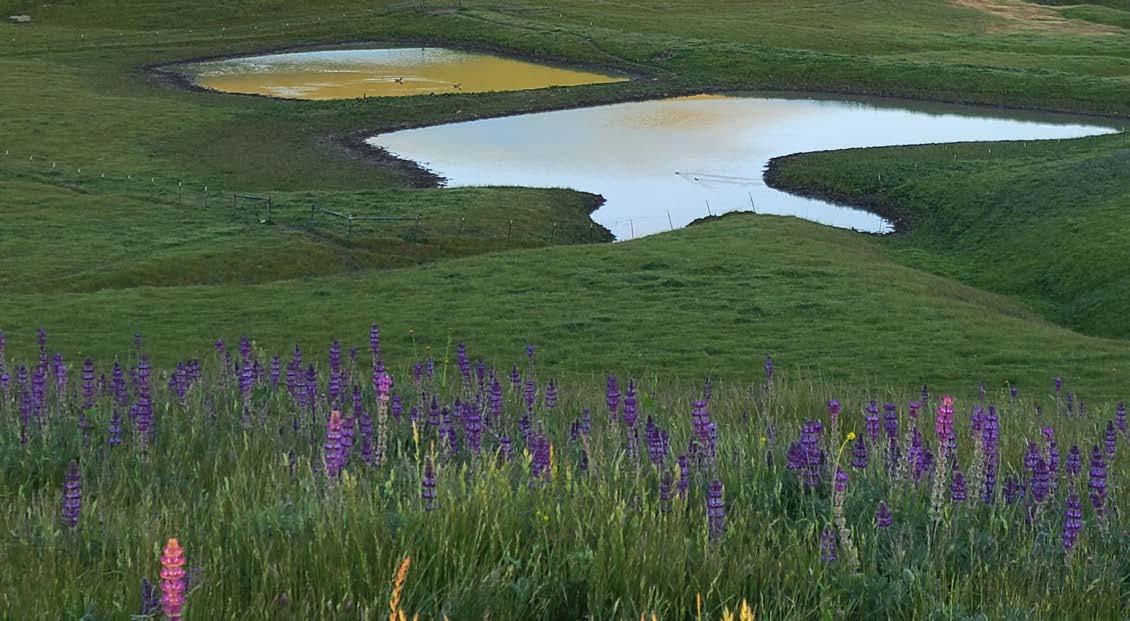
SAVE MOUNT DIABLO and Friends of Livermore won a lawsuit on October 1 against the City of Dublin’s decision to put Measure II on the November 2024 ballot without any kind of environmental review. This measure would have allowed for commercial development, like warehouses and semitruck shipping operations, to be built on land on the southern end of Doolan Canyon.
Southern Doolan Canyon is located along Highway 580 and is the site of the scenic Crosby property between Fallon Road and Airway Boulevard. It is the only open space between Livermore and Dublin, and for decades, residents have fought to keep it that way.
Measure II intended to amend the city’s General Plan to allow commercial development on the beautiful Crosby property once it was annexed into Dublin. It would’ve overturned open space protection from the 2014 Dublin Open Space Initiative, which had prohibited commercial development in Doolan Canyon.
In 2014, following a successful signature gathering effort from Save Mount Diablo, Friends of Livermore, and others, the Dublin City Council adopted the Dublin Open Space
Initiative of 2014. That initiative protected nearly 4,000 acres of unincorporated land in Doolan and Collier canyons by amending Dublin’s General Plan to prohibit commercial development.
However, it did allow for the future construction of the Dublin Boulevard extension, a road intended to connect Dublin Boulevard and North Canyons Parkway. The planned road runs through two parcels known as the Crosby property, the very land at issue in this case.
In 2024, despite strong objections from Save Mount Diablo and Friends of Livermore, the Dublin City Council voted to put Measure II on the ballot.
In November 2024, Measure II only narrowly passed with 53.11 percent of the vote. It amended Dublin’s General Plan to revoke protections on the Crosby property, which cleared the way for annexation and commercial development. But here’s the problem: Dublin did not conduct any environmental review before putting Measure II before voters.
Under the California Environmental Quality Act, major land use changes, especially those that could result in warehouses and truck traffic, require
a study of potential environmental impacts. Measure II would create these exact kinds of major land use changes. With Measure II paving the way for the development of the only open space between Dublin and Livermore, the stakes could not have been higher. Now, with this legal victory articulated in the tentative decision that was issued on October 1, the city will have to rescind Measure II’s General Plan amendment, protecting the beautiful Crosby property from development without proper environmental review. •
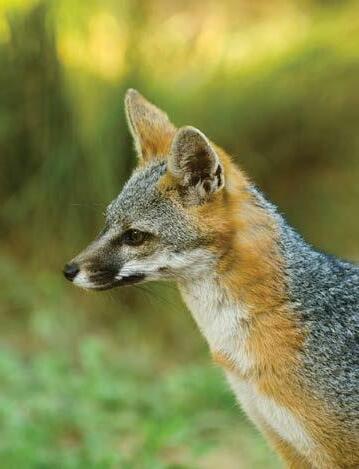

By Juan Pablo Galván Martínez and Steven dePaschalis
Victory! In late August 2025, the Board of Valley Water voted to halt all spending and staff work on the Pacheco dam project.
THE CURRENT RESERVOIR sits in the middle of Pacheco Pass and covers about 200 acres of land and about 5,000 acre-feet of water. It is north of Highway 152 and southeast of Henry W. Coe State Park.
Valley Water wanted to dramatically expand the reservoir to make it 20 times larger.
Their decision to halt the project follows the California State Water Commission refusing to assign any money to the project because of lack of progress and increasing costs.
That same week, the federal Bureau of Reclamation stated that they would not spend money on the project and would not store water in the expanded reservoir. These back-to-back blows and the relentless work of the Stop Pacheco Dam Coalition finally made the Board put an end to this insane project.
Save Mount Diablo has been working to oppose this harmful project for years and brought decades of experience in responding to land use threats to help in the fight. However, our partners, including landowners, conservation organizations, and
decision makers did most of the heavy lifting in fighting against this project.
This new larger reservoir would have blocked a designated critical wildlife linkage in the ecologically diverse Diablo Range. It also would have flooded 150 acres of protected land on The Nature Conservancy’s Romero Ranch conservation easement area, as well as a portion of Henry W. Coe State Park, land that is designated to be permanently protected.
The costs of the project were completely unreasonable, too. When Valley Water applied to the state seven years ago for funding, it said the new reservoir would cost $969 million. Since then, costs have tripled to $2.7 billion. With inflation and finance expenses, final costs could have been more than $5 billion.
To fight against this project, Save Mount Diablo spoke at public meetings where agencies such as the California Water Commission discussed the project. After hearing comments from Save Mount Diablo and others, California Water Commission members expressed concern over the

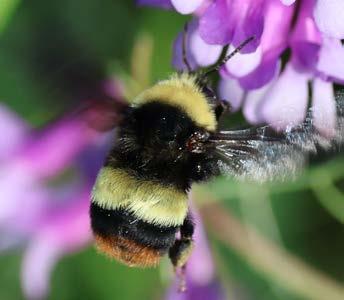
View from above the North Fork of
Creek, which would
been flooded.
A bald eagle in the area that Valley Water proposed to flood. BOTTOM RIGHT: Crotch’s bumble bee, a candidate for listing under the California Endangered Species Act; habitat for this species would have been lost under the proposal.
delays and the funding being held hostage by Valley Water, instead of being spent on viable projects.
We also recorded beautiful images and video of the areas that would have been drowned if the Pacheco dam and previously proposed Pacheco Reservoir expansion had proceeded.
Many thanks to the landowner and Stop Pacheco Dam Coalition coordinators for facilitating our tour and helping us share the beauty and importance of this amazing place with the public.
This is a huge victory, and while we and our partners will remain vigilant in the future if this project ever comes back in some form, we savor this win and the end of a threat to this crucial wildlife corridor and beautiful part of the Diablo Range. Thank you to our partners and supporters for making it possible! •

By Kendra Smith
THIS SUMMER , Save Mount Diablo welcomed students from the Mount Diablo Unified School District to Curry Canyon Ranch for the fourth year of our CARES field trip program. Students from El Dorado Middle School, Ygnacio Valley High School, and Garden Academy protected blue oak seedlings on the slopes above the ranch house as part of our 10,000 Trees and Plants initiative.
Using special blue grow tubes that create a beneficial microclimate, 36 hardworking students and seven adults worked together to protect 358 seedlings—an impressive accomplishment in just a few days. These efforts help ensure a healthier, more resilient forest of native trees for generations to come.
Afternoons were devoted to nature exploration, giving students the chance to connect more deeply with the landscape. They hiked to the pond to observe California red-legged frogs, tried plein air painting, experienced meditative solo time, and even peered through foldscopes at pond-
water samples as part of a hands-on microbiology lesson. Each activity invited students to see nature through different lenses—artistic, scientific, and personal—while building a sense of comfort and belonging outdoors.
In July, more than 160 campers from four YMCA summer camps embarked on guided nature walks, worked together to “create a habitat” with forest materials, participated in scavenger hunts, and learned about the unique features of redwood trees— including getting to “know” their own individual tree.
It was a special experience to watch each child reflect on the magic of the forest during nature journaling. Watching the next generation engage in nature play and experience awe among the redwoods, we are grateful to our partners, the YMCA, East Bay Regional Park District, and Save the Redwoods League, for making this memorable experience for the children.

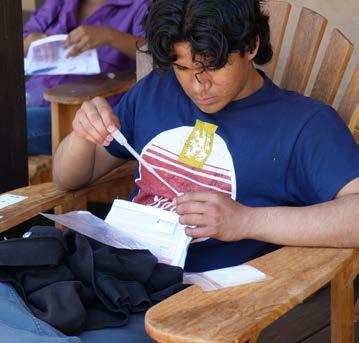
We are excited to continue fostering these connections. During the school district’s fall break in October, Save Mount Diablo hosted a week of CARES field trips at Mangini Ranch Educational Preserve and Curry Canyon Ranch. These experiences are vital to fostering curiosity and a lifelong love of the natural world in the young people of our communities.
Thanks to the support of our communities and partners, Save Mount Diablo is able to provide transformative outdoor experiences that inspire stewardship and deepen young people’s relationship with the natural world. Together, we are planting not only trees, but also the seeds of future conservation leaders. •

Restoring Marsh Creek together—volunteers bring a pollinator haven to life
By Haley Sutton
NESTLED BETWEEN a blue oak–dotted hillside and Marsh Creek sits a little pollinator garden surrounded by a cedar split-rail fence, with turkey vultures frequently soaring overhead. This native garden is a feast for the senses: pops of lavender from the blooming California asters, and tufts of golden yarrow amidst a sea of sage and emerald; brushing along the plants releases a sweet and earthy aroma.
Every few weeks during the summer, volunteers gather to water the garden. They grab 2.5-gallon jugs of water in each hand and wander over to plantings to give them a good soak. Others take shovels and wheelbarrows to load mulch to spread around the plantings. They mark the plants they’ve watered with clothespins before refilling the jugs from drums full of more than 220 gallons of water.
Save Mount Diablo’s Marsh Creek 7


property is one of two sites the watering crew visited this summer, from July through its first rains. This summer, 25 volunteers joined us to water and mulch over 700 plants at Marsh Creek 7, contributing 175 hours. It’s crucial to water new plantings during the dry season for the first few years after planting to bolster a successful establishment. With the support of a grant from the California Department of Fish and Wildlife (CDFW), we have the plants and mulch to transform the site into a pollinator haven. And thanks to a dedicated crew of volunteers, we have the people power to bring this garden to life!
Our current restoration projects along Marsh Creek do not end there. Farther upstream, we’ve been tackling giant reed ( Arundo donax), a noxious weed,
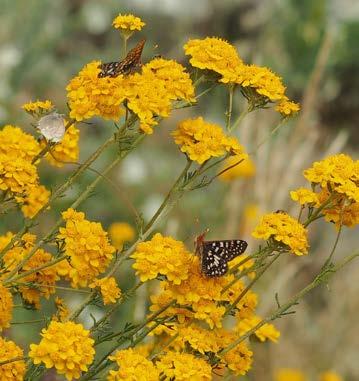
at our Big Bend property. This highly invasive grass infiltrates waterways and produces thick stands that outcompete native plants, change habitat quality, and influence streamflow. Not to mention it can easily overtake a new area when a piece of the plant breaks off and flows downstream.
To be successful in eradicating giant reed without chemicals, the whole plant and root mass must be removed from the soil—a tedious process, especially for larger plants. With a permit from CDFW, a digging tool, and some elbow grease, our team has been removing plants along the creekbanks at Big Bend. Once this is complete, we will plant natives like willows, mule fat, and mugwort to restore and revegetate the riparian corridor.
These projects are part of Save Mount Diablo’s Climate Action Plan goals to enhance the resilience of natural and human communities, while also bringing them together through meaningful experiences.
Want to be a part of the restoration action?
Join our Diablo Restoration Team (DiRT) volunteer crew! Sign up at bit.ly/smddirt. •




Jerome Holland serves on Save Mount Diablo’s Board of Directors and Finance Committee. He was promoted to President at Matson Logistics in 2025. He oversees all strategic planning, corporate development, mergers and acquisitions, and business development for Matson. His accomplishments include the acquisitions of Span Alaska and Horizon Lines, Inc., and managing the construction of two new cross-dock terminals in Alaska. Jerome holds a bachelor’s degree from Queen’s University and earned his Chartered Accountant (CA, CPA) and Chartered Financial Analyst (CFA) professional designations in 2001 and 2003, respectively.
Steven dePaschalis joined Save Mount Diablo in 2025 as our Land Use Advocate. He grew up in the Bay Area and has always had an immense passion for being in nature. Steven studied environmental science and management at UC Davis. During college, he worked as a Park Ranger for the National Park Service in Glacier National Park and conducted forestry research. After graduating, he interned at Alameda County Water District. In his free time, Steven loves to read, hike, and go road biking. He is excited to protect land throughout the Diablo Range for everyone to enjoy and find inspiration in.
Linda Muders has a decade of accounting experience, plus office manager and administrative experience as well. She was born and raised in the Bay Area. She moved away to live in Chico and Butte County for 18 years with her family, and she moved back to the Bay Area in 2020. She enjoys the outdoors and nature; while she lived in Chico, she hiked many trails in Bidwell Park and in Lassen. She’s a cyclist and a runner, and she’s passionate about hot yoga, which she practices four to five days a week. In addition, she travels as much as time allows and enjoys spending time with her son when he’s home on a holiday break.
THIS SUMMER, on a blazing June day, High Country News joined our Land Programs Director, Sean Burke, and Teresa Ely, a raptor biologist, as they monitored Save Mount Diablo’s kestrel nest boxes.
For five years now, we and our partners have worked to protect and research Mount Diablo’s American kestrels.
Save Mount Diablo is supporting kestrel populations by conserving habitat and installing nest boxes on Mount Diablo’s wild lands.

We live in a concerning time for avian populations. The bird flu epidemic has affected more than 170 North American species of birds; some populations have plummeted.
Kestrels have also long been threatened by development and invasive species simultaneously encroaching on their habitat.
To date, Save Mount Diablo has installed 37 kestrel nest boxes on several properties that we monitor for activity.
At least 75 percent of these boxes have successfully served as kestrel habitat.
With each year come new discoveries, including the year we recorded a kestrel returning to its nest with a kingsnake in tow—dinner for the family!
What did our team find in 2025?
Tag along with the kestrel crew and read the full article to find out.
By Samantha Kading
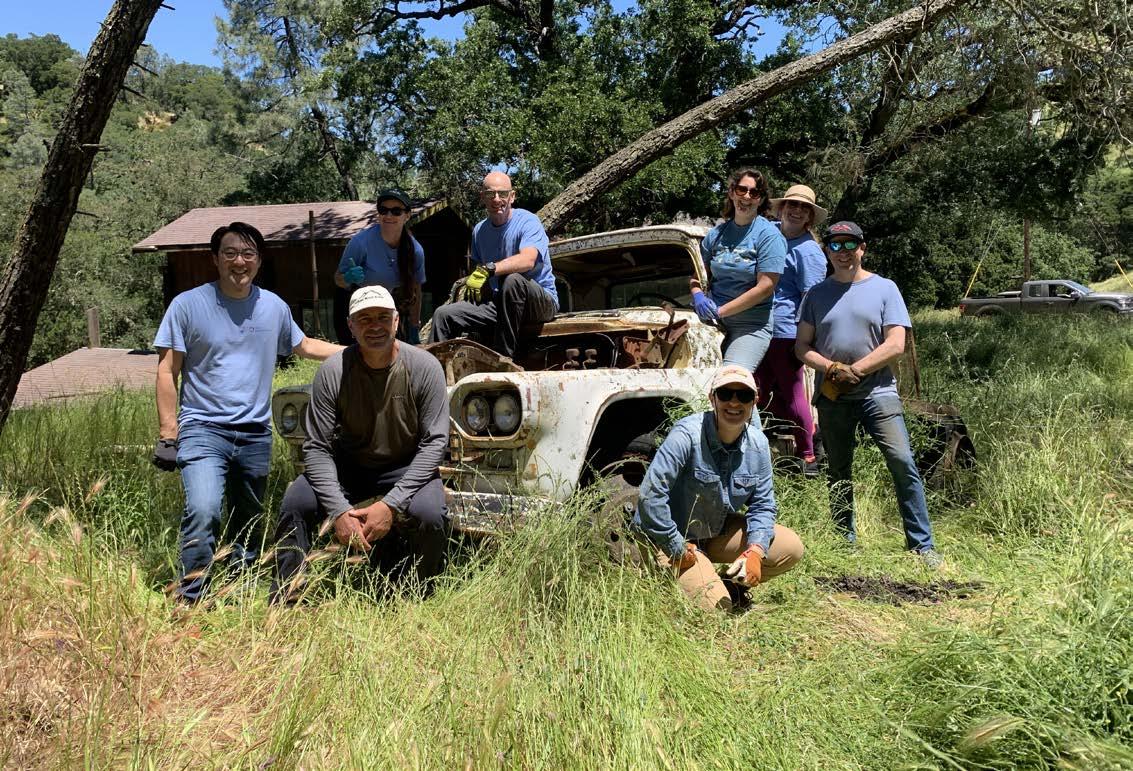
CORPORATE PARTNER AXA XL is turning its commitment to sustainability into positive action by supporting an array of Save Mount Diablo’s conservation programs.
Through a generous program grant, AXA XL provided essential financial resources that helped Save Mount Diablo develop and pilot the curriculum for its new Young Diablo Explorers program. This field trip program, which highlights natural lessons and examples at Save Mount Diablo’s Mangini Ranch Educational Preserve, provides third through fifth grade teachers and students with an active, engaging, and standards-based learning experience. The full curriculum is available on Save Mount Diablo’s website, enabling educators everywhere to use this high-quality resource to help connect more kids to nature.
AXA XL has also provided generous grant funding to support the critical stewardship work that Save Mount Diablo staff and volunteers conduct on the more than 2,700 acres that Save
Mount Diablo owns or manages.
AXA XL’s commitment to valuing nature is evident in its financial support and employee involvement: a group of local employees annually joins Save Mount Diablo’s stewardship staff for a day in the field, volunteering to help with ongoing stewardship projects, such as habitat restoration, trash removal, and chipping of woody debris alongside trails and park access roads.
“Providing grant funding to Save Mount Diablo represents the intersection between AXA XL’s global corporate sustainability initiatives and a desire to make a difference at a community level. As a longtime resident of Walnut Creek, Mount Diablo State Park has been a resource that I personally value,” says Brett Stewart of AXA XL .
“I’m so thankful for the work that Save Mount Diablo has done over the years in helping preserve this more than 120,000-acre open space. When AXA XL offered me the opportunity to engage with a local nonprofit through its Hearts in Action charitable giving
program and Global Day of Giving volunteer day, Save Mount Diablo was an easy choice.”
Partnership and community investment have always been an essential part of Save Mount Diablo’s successful conservation work, and strong collaboration is especially important now that it faces urgent environmental challenges from the changing climate.
Thanks to generous support from AXA XL and other committed individuals and businesses, the long-term conservation work of Save Mount Diablo continues strong in the Diablo region. •
Find out more about how to support Save Mount Diablo’s conservation work as a corporate partner. Contact Assistant Development Director Samantha Kading at skading@ savemountdiablo.org or call 925-949-4513.

With your generous support, we met our goal and raised $544,203—critical funds that will allow us to continue our work preserving the natural lands and wildlife still at risk.
More than 500 community members and elected officials came together at China Wall in Mount Diablo State Park to celebrate our successes.
They raised their paddles in support of Save Mount Diablo’s important conservation work to protect and defend land on and around Mount Diablo and up and down the Diablo Range.
We are grateful to all of our generous event sponsors; our live, silent, and online auction donors and bidders; our committed volunteers; and our guests, who made this year’s Moonlight on the Mountain gala such a fantastic and successful event.
Thank You







Charla Gabert & David Frane


Jeanne Thomas






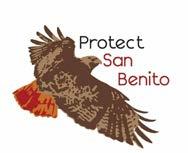
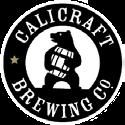


Eric & Laura Rudney


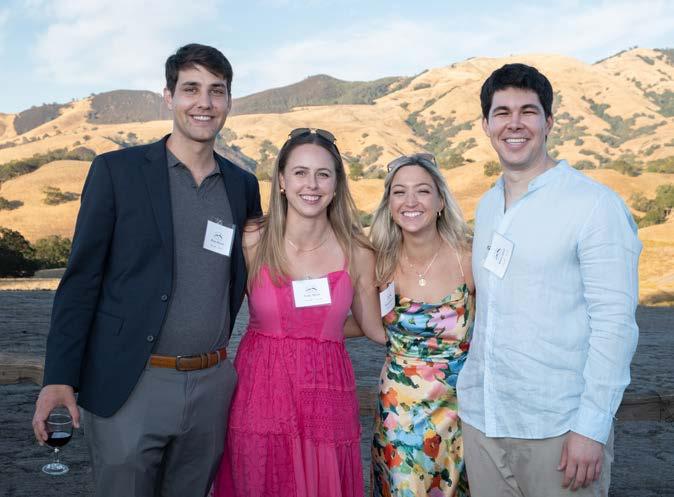
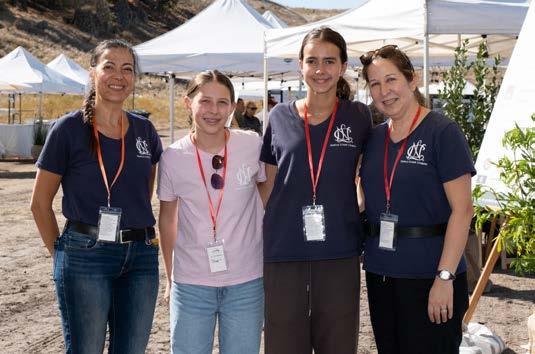
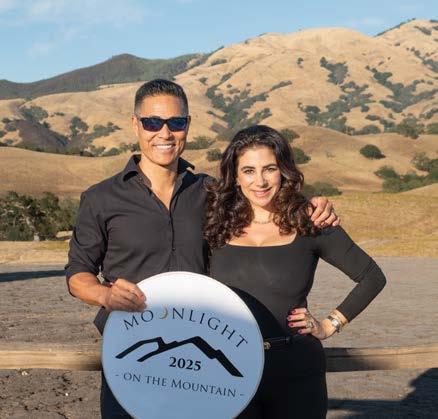
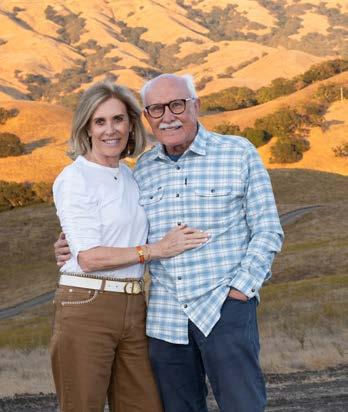


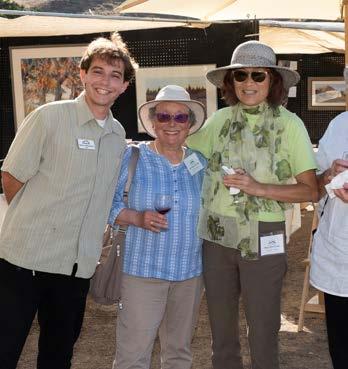
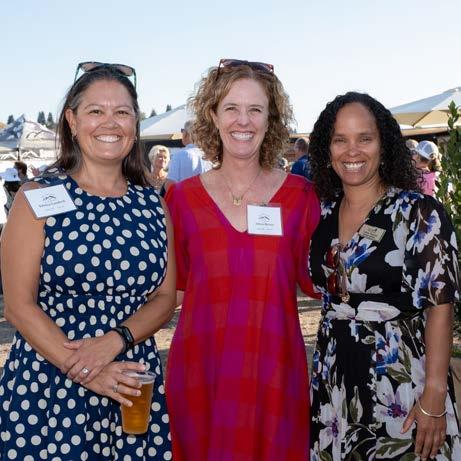

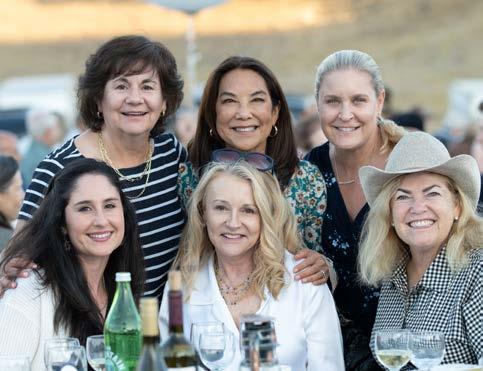




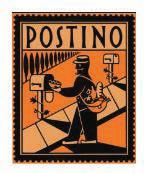

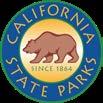








TRIBUTE GIFTS and donations made in honor of or in memory of loved ones between January 1, 2025, and June 30, 2025 are listed below. Thank you to all of our supporters. Your generosity preserves, defends, and restores the mountain for all of us to enjoy!
Tribute names are indicated in bold. An asterisk (*) denotes donors who make monthly tribute gifts.
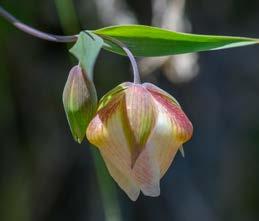
Seth Adams & Eden Gazit
Scott & Claudia Hein
Judy Adler
Barry Waldman
Hanna Alger
Bergit Mueller
Michael Baleta
Samantha Chu
Adriane Bosworth
Kathleen Korpell
Robert Canning
Debra DeGraw
Boonsuay Clement
Kristen Wick
Ted Clement
Anonymous
Marjorie T. Colt
Rosalia Mendoza
Soren Craddick
Victoria & David Arata
Elaine Rose Davies
Patricia Tardiff
Holly Eliot
Mark Eliot & Kelly Moran
Bette & Jim Felton
Herb & Margaret Eder
Leslie Grgurina
Laura Wilson
Juan Pablo Galván Martínez
Pierre Bull
Brunell Gugelmann
ML Melville
Kenneth Howard
Steven Raymond
Michael Jameson
Bette & Jim Felton
Virginia Johnson
Steven Raymond
Diane Longshore de Golia
Jeff & Diane Burnham
Joan Morris
Sonja Bjork
Dale Frederick Olds
Jean Olds
Brian C. Stumpp
Frederick Stumpp*
Jeanne Thomas
Joan S. Armstrong
Elaine & Phred Jackson
Douglas & Barbara Jones
Rosemary Thompson
Josie & John Fike
Jean Vieth
Eric Petry
Patricia Yamshon
Paul Yamshon
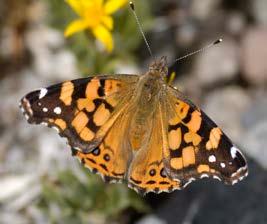
Hanako O. Andrews
Paul Andrews
Burt Bassler
Anonymous
Tom Addison
Herbert Chang
Ted & Boonsuay Clement
Dana & Dave Dornsife
Terri & Bradley Dyer
Charla Gabert & David Frane
Garrett & Cathy Girvan
Nancy & Joel Goodman
Dena Heath
Scott & Claudia Hein
John Helsel
Roz Hirsch
Ken Kahrs
John Katakis
Caroline Kelley
Alana Kleinberger
Edgar Koschmann
Susie Krause Haus
Marilyn Lemm
Candace Lindskog
Sam & Bonie Marks
Erin Miller
Lindsay Moss
Marilyn & Kent Muhlker
Sandra Moy
Don Ritchey
Warren Shukis
Tom & Shirley Simone
Malcolm & Casey Sproul
Susan Studier
Mary Louise & Bruce Wilson
Charles Wong
Dorothy Wortham
Eugene Callahan
Marianne Callahan*
Robert Canning
Janet Canning
Dietlind Goricke
Ernie Colombo
Michael Colombo
Frank Colombo
Michael Colombo
Zygmunt Deutschman
Contra Costa Hills Club
Marco DiMarco
Francie Roberts
Karoline Doberenz
Shirley McPheeters
Scott Dowd
Jane Dubitzky
Kazim Erdem
Denise Erdem
Timothy W. Estabrook
TM Dasilva
Robert Falcone
Lucia Falcone
Anna Louise Ferri
Larry Ferri*
Helen Fink
David Fink
Virginia Gallagher
Susan Reutter
Judy Gillivan
Jim Gillivan
Beatrice Gordon
Gaynel Wilhoyte
Norwel Gordon
Gaynel Wilhoyte
Linda Harding
Michael Harding
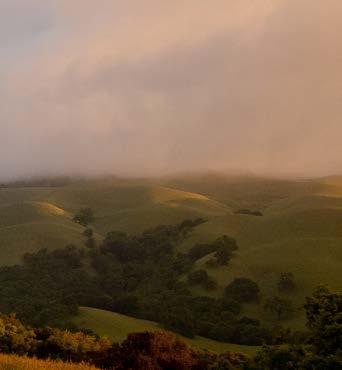
Michael Hughes
Laradean Nerli
Wiley Johe
Contra Costa Hills Club
Dick Karns
Francie Roberts
Lanning & Joan Kay
Cynthia Kay
Nancy K. Kerr
Eric Ozenne*
Joan Kunz
Karen Dyer
Aaron Kunz
Barb Larson
Francie Roberts
Dot Lawton
Jill Student
Jo Lee
Contra Costa Hills Club
Sue Ohanian
Anonymous
Richard & Sandy Conti
Chris & Skip D'Orazio
Pat & Bob Fulton
Charla Gabert & David Frane
Scott & Claudia Hein
Janet Higgins
David & Janyce Hoyt
Al & Debbie Medvin
Steve Ohanian
William & Deborah Oldenburg
Robert & Anne-Jette Oxenburgh
Stephanie Rudy
Lise Sage
Malcolm & Casey Sproul
Barbara Tillinghast
Mary Lewis Ogden
Stephanie Bickers
Shirley McPheeters
Jeanne Thomas
Karen Wetherell
Kim Madison
Shirley Langlois
Maxine
Anonymous
Lew May
Patrick & Susan May
Maya
Laura Nakamura
Thomas Mathews
Mike & Jane Henson
Pat McDonald
Contra Costa Hills Club
Janet Montes
Terry & Glenn Gonzalez*
Robert A. Orlando
Francis Barrett
Ellen Jeanne Peterson-Brandel
Roland Brandel
Cindy Phillips
Anonymous
Kristine & Travis Law
Queenie
Alise & John Bamforth
Sylvia Saunders
Contra Costa Hills Club
Marvin Schinnerer
Mary Schinnerer
Nancy Stout
Contra Costa Hills Club
Vivian Sweigart
Terry & Glenn Gonzalez*
Janos Varnai
Marcus Varnai
Anna Vrbich
Megan Harris
Elfriede Francesca Whitcher
The Sneckner Family
Robin Wilby
Nick Wilby*
Mary Louise Wilson
Scott & Claudia Hein
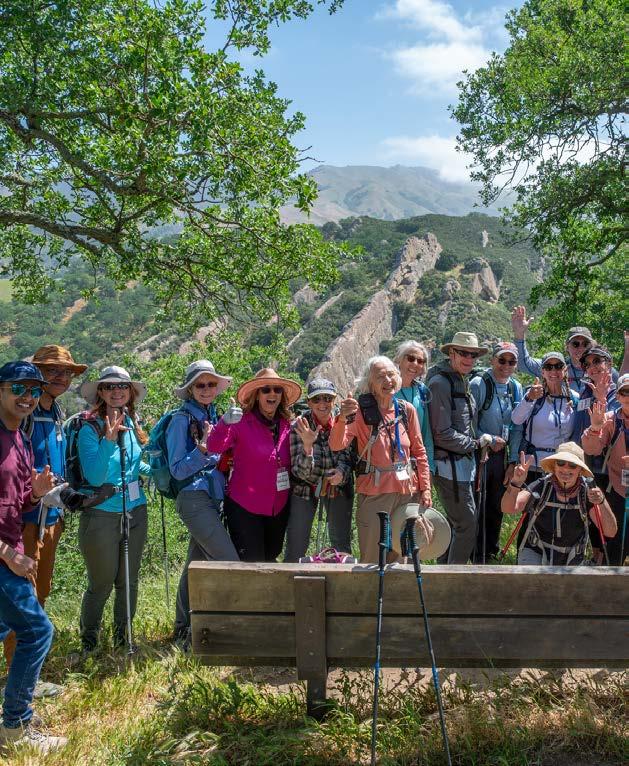
We have made every effort to accurately spell names. If your name or donation has not been recorded correctly or was mistakenly omitted, we offer our apologies. Please contact us so that we can amend our records by sending an email to Queenie Li, Database Coordinator, at qli@savemountdiablo.org.
Become a part of a dedicated group of supporters who make automatic monthly gifts to sustain the ongoing work and programs of Save Mount Diablo all year long.
Monthly giving is one of the easiest and most effective ways to give.
• You can start, change, or stop at any time.
• Your dependable support helps our team respond to unexpected conservation opportunities and also allows us to budget and plan for long-term projects.
• With no reminders or extra mail, monthly giving is green giving, and more of your contribution goes directly to supporting conservation in your community.
Learn more and sign up at bit.ly/SMDgive.
201 N. Civic Drive, Suite 190
Walnut Creek, CA 94596
TEL: 925-947-3535
www.savemountdiablo.org

IF YOU’RE 70½ YEARS OR OLDER, supporting Save Mount Diablo with a gift through your individual retirement account (IRA) may be a great way to give.
IRA gifts offer a variety of benefits for you and the charities you support. A charitable distribution from your IRA (often called a “charitable rollover” or “qualified charitable distribution” or “QCD”) is an easy way to give from your appreciated assets.
When these gifts are made directly from your IRA to a charity, the distribution is not included in your taxable income. This means you can avoid income tax that would otherwise be due on IRA withdrawals. Plus, your qualified charitable distribution could be counted toward your required minimum distribution for the year, as long as certain rules are met.
To qualify:
• You must be 70½ or older at the time you make your gift
• The transfer must go directly from your IRA to Save Mount Diablo to avoid income tax obligations
• In 2025, individuals who are 70½ or older may donate up to $108,000 in qualified charitable distributions from their IRAs
• You cannot receive anything of value in return for your gift
To learn more, please visit bit.ly/irasmd or contact Samantha Kading at skading@savemountdiablo.org or 925-949-4513 . Because Save Mount Diablo cannot offer legal or tax advice, we recommend that you work with qualified financial and legal advisors before making your gift.
“My dream is that the whole of Mount Diablo, including its foothills, will remain open space . . . that the visual and natural integrity will be sustained.”
DR. MARY L. BOWERMAN